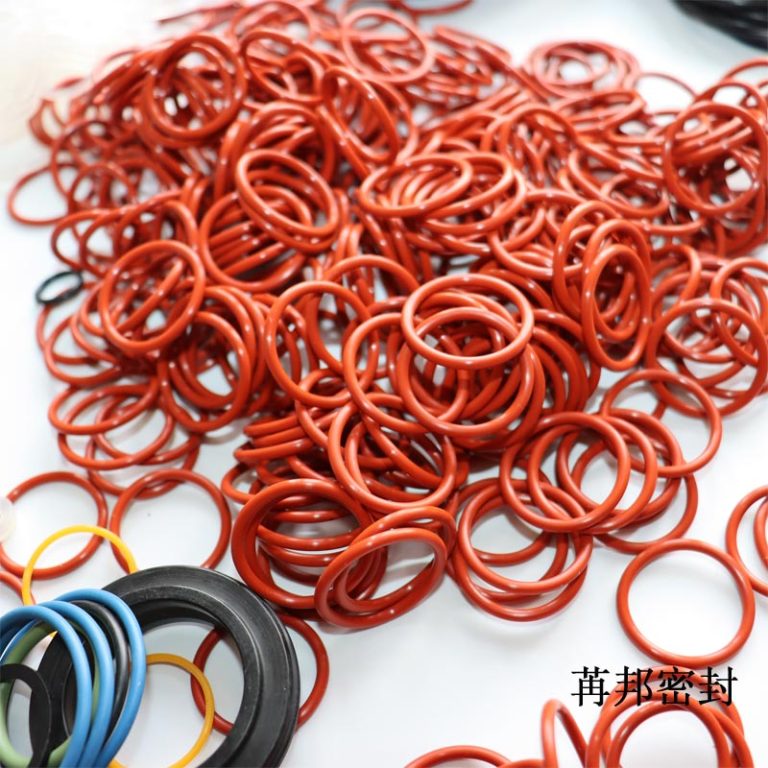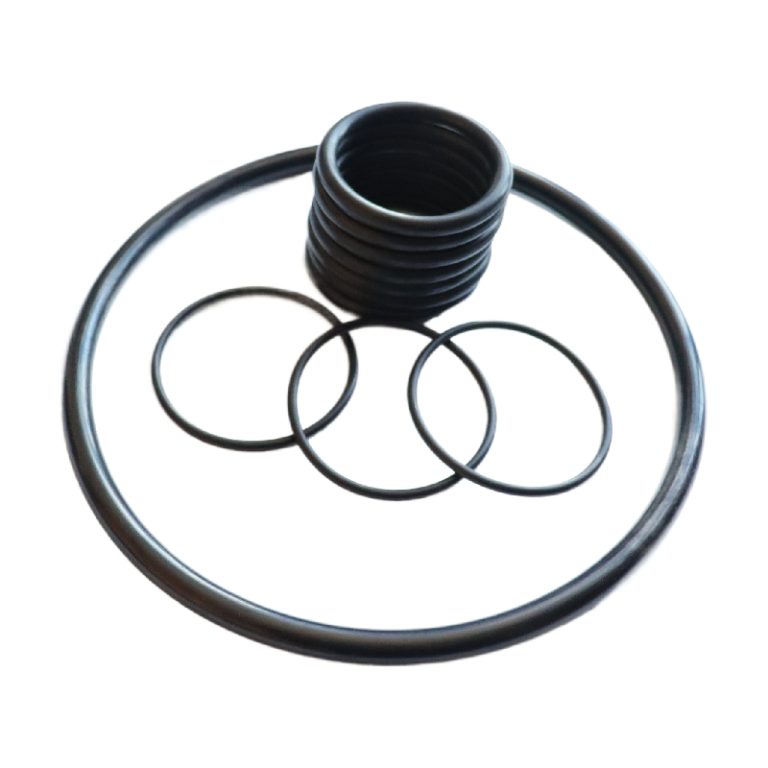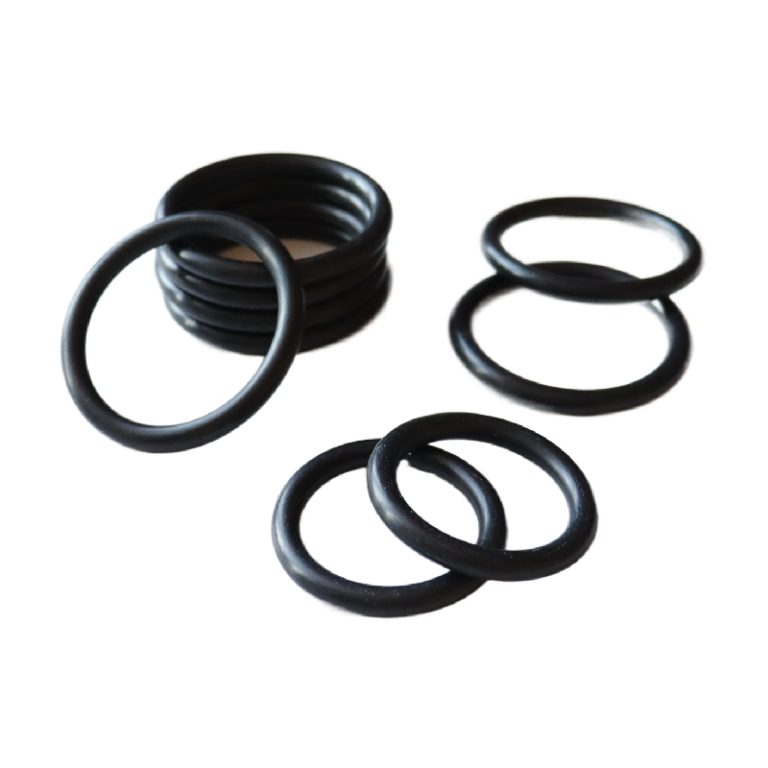Why silicone O-rings are suitable for high temperature environments
In industrial manufacturing, automotive, aerospace and even food processing, high-temperature environments place extreme demands on the performance of seals. Ordinary rubber materials tend to harden, crack or lose elasticity at sustained high temperatures, leading to seal failure, safety hazards or production interruptions. Silicone O-rings are the preferred solution for high temperature applications due to their unique properties. Our company explains why silicone O-rings are suitable for high-temperature environments from the aspects of material properties, practical application scenarios, and purchasing considerations.
- Silicone’s “natural heat-resistant” genes
Silicone is a synthetic polymer material, the main chain of its molecules by the silicon (Si) and oxygen (O) atoms alternately connected to the composition, rather than the traditional rubber structure of carbon – carbon chain. This chemical property gives silicone two core advantages:
High temperature resistance: Silicone O-rings are typically stable in temperatures ranging from -60°C to 230°C (even withstanding 300°C for short periods of time), far exceeding the limits of ordinary rubber (e.g., about 120°C for NBR or EPDM). Thermal stability: under sustained high temperatures, silicone will not age or harden as quickly as other materials, and can maintain elasticity and sealing performance for a long time.
In addition, silicone is highly resistant to UV rays, ozone and ambient humidity, which makes it excellent in complex environments such as ovens, engine compartments and outdoor equipment.
- Silicone O-Ring Application Cases in High-Temperature Scenarios
The heat resistance of silicone O-rings makes them the “invisible guardians” of many industries:
Automotive and Transportation Engine sealing: Turbocharging system, exhaust piping and other high-temperature parts need to withstand temperatures above 150°C. Silicone O-rings can effectively prevent oil leakage and gas escape. Electric vehicle battery packs: Coolant line seals in battery thermal management systems require high-temperature resistant and insulating materials, making silicone the ideal choice. Food and Pharmaceutical Industry High-temperature sterilization equipment: steam sterilizers and filling lines need to operate at high temperatures and pressures above 120°C. Silicone O-rings are FDA-approved and safe. Industrial Manufacturing Injection molds and hot runner systems: Silicone seals can withstand the high temperature impact of molten plastic, reducing downtime and maintenance. Household Appliances Ovens and coffee makers: Silicone O-rings can seal out high-temperature vapors without releasing harmful substances, ensuring safety for home use.
- Silicone vs. other materials: performance at high temperatures
Why choose silicone over other sealing materials? Below is a comparison of common materials:
Material Maximum withstand temperature Advantages Limitations Silicone 230°C Best heat resistance, long elasticity retention Weaker tear resistance, higher cost Fluoroelastomer 200°C High chemical resistance Poor low-temperature elasticity, expensive EPDM 150°C Good water vapor resistance, low cost Easy to age at high temperature NBR 120°C Excellent oil resistance, poor performance at high temperatures.
Obviously, if the application scenario is dominated by high temperature, the comprehensive advantages of silicone are more prominent. However, it should be noted that: if oil or chemical resistance (such as contact with fuel oil or strong acids) is required at the same time, it may be necessary to choose Viton or customized silicone composite materials.
- Key Considerations for Procuring Silicone O-rings
For purchasers, selecting silicone O-rings requires a balance of performance, cost and supply chain stability. Below is a list of key issues:
Define the required parameters Temperature range: Confirm the peak and duration of the device’s operating temperature. Media exposure: Will it be in contact with oils, chemicals or food? Choose a product that meets the appropriate certifications (e.g., FDA, UL, or RoHS). Dimensional accuracy: Is there a strong need for customization? Standard parts are usually cheaper and faster to deliver. Cost Optimization Strategies Bulk purchasing: Silicone O-rings have high production tooling costs, but ordering in bulk can dilute the unit price. Alternatives testing: In non-extreme temperature regions (e.g. <150°C), try EPDM or NBR to reduce costs. Supplier selection Certification and compliance: Prefer suppliers that are ISO 9001 or IATF 16949 certified to ensure quality control. Technical support capabilities: Quality suppliers should provide material test reports (e.g. heat aging test data) and customized design services. Avoid common pitfalls Ignoring dynamic sealing needs: If the O-Ring requires frequent movement (e.g. rotary shaft sealing), additional attention needs to be paid to wear resistance. Ignore the installation environment: high temperature + high humidity may accelerate the aging of some silicone products, need to communicate with suppliers in advance.
- Practical suggestions to extend the life of silicone O-rings
Even the best materials need to be used wisely:
Regular inspection: It is recommended to check seals for hardening or deformation every 6-12 months in high temperature environments. Correct installation: Avoid excessive stretching or twisting, use lubricants to reduce friction loss. Cleaning and maintenance: Remove any residual chemicals or particles on the surface to prevent localized corrosion. In conclusion:
The excellent performance of silicone O-rings in high-temperature environments stems from their unique molecular structure and extensive application verification. For engineers, it is a reliable technical choice; for purchasing decision makers, it represents long-term cost savings and supply chain stability. Whether you are upgrading existing equipment or developing new products, choosing a silicone sealing solution provides a “cool” response to the challenges of high temperatures.





